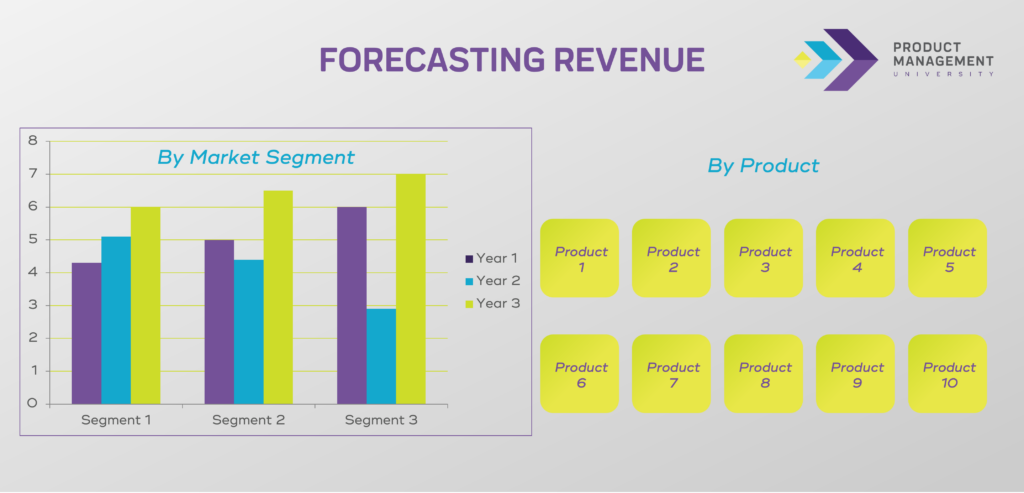Product Portfolio Management – Forecasting Revenue by Market vs. Product

Product managers and product marketing managers, if you’re into data driven decisions, forecasting revenue is one of the more difficult things you’re tasked with, especially for each product/module. There’s a good reason it’s so difficult.
But here’s the bigger thing. With the recurring revenue models in B2B software, it’s not just product management and product marketing in this equation. Sure, sales will always be the main focal point but what about customer on-boarding teams responsible for starting the revenue meter at the conclusion of the on-boarding process?
What about customer success teams responsible for account management and cross-selling/up-selling additional products?
If you’re thinking market data is pretty hard to come by at a product/module level, you’d be 100% correct. With that as the backdrop, here’s how most of you play it, and understandably so.
You pretty much see what sales will sign up for, right? Not exactly methodical or data-driven!
Here’s the funny thing. Unless your company has bet the farm on one or two new products, at the end of the year and regardless of whether your company hits its revenue goal or not, no one ever goes back to look at forecast vs. actual at a product level or to see how close sales came to the product forecasts they signed up for.
“Why do we even bother?” is something I’ve heard from all too many of you.
For the vast majority of you, 80% of your revenue comes from 5 or fewer market segments. Let’s run with this assumption to come up with a simpler and more data-driven approach to forecasting revenue.
Forecasting Revenue by Market, Not Product
If you’re a football nerd like me, you’re familiar with the cliché, “take what the defense gives you.” In this case, we’ll take what the market gives us and come up with a more scientific and data-driven approach to forecasting revenue – by market segment, not by product!
Market growth and adoption forecasts are readily available for your product category, and if you’re lucky they’re broken down by market segment. Even if they aren’t, a revenue forecast that’s logical and realistic is a pretty simple equation, even though it’s never an exact science.
When you look at the higher-level category growth forecasts for your products, your historical revenue growth, the size of your salesforce and your desired growth for the next 1-3 years, it’s pretty easy to come up with a logical revenue contribution from each market segment instead of the guesswork of doing it for each product.
Here’s the bottom line. In B2B software/SaaS, there’s no crystal ball good enough to predict revenue at a product/module level with any logic. So why bother?
It’s much easier, more accurate and more data-driven to forecast revenue for a few market segments than it is for a lot of products. The best part is, it simplifies the planning and execution not only for product management and product marketing, but also for sales, customer on-boarding and customer success because you’re setting revenue goals with pointed solutions for each market.
It’s a lot easier than everyone competing for resources to hit product/module revenue goals when no one really knows what customers will actually buy or use until it happens.
Click here if you want to experience the easiest way to learn product management, product marketing, pre-sales demos and customer success with our unique hands-on learning format. Be sure to check out our Product Management Framework that simplifies everything by making customer outcomes the starting point for building, marketing, selling and delivering strategic value.
Subscribe to The Product Vibe or follow Product Management University on LinkedIn to make sure you get the 10-part post.
by John Mansour on October 3, 2023.